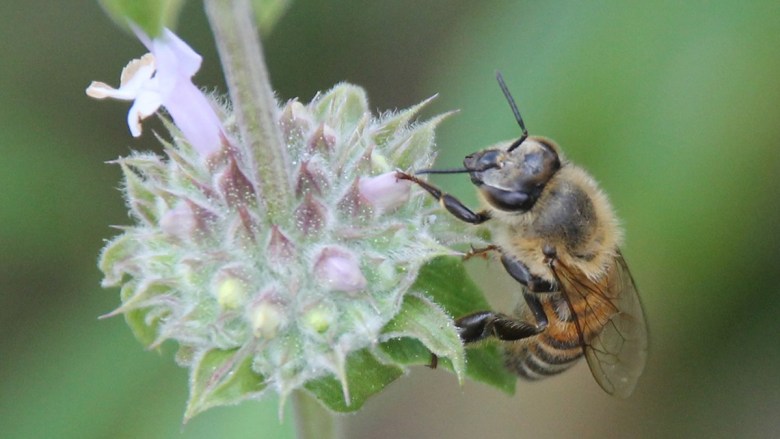A research released Monday by UC San Diego biologists found that non-native honeybees are so good at pollinating that they constitute a serious threat to native California bees and other pollinators.
Feral European honeybee colonies have flourished in the American Southwest, partly due to their effectiveness when brought to North America. Despite the fact that almost all plants require pollinators, the study discovered that these invasive bees account for about 90% of bee visits to the flowers of several native plant species in the area.
The Royal Entomological Society’s publication, Insect Conservation and Diversity, published the study. The authors estimate the potential effects of honey bees on native bee populations. They discovered that on the first day after a flower opens, honeybees extract almost 80% of the pollen.
Pollen is used by all bees in the area and by the great majority of bee species globally to rear their young. The researchers discovered that the honey bees’ daily pollen removal from just 2.5 acres of native vegetation is sufficient to feed thousands of native bees every day at the native shrubs’ peak bloom.
According to biologist Keng-Lou James Hung, who received his PhD from UCSD and is currently an assistant professor at the University of Oklahoma, honeybees can be a major ecological threat to natural ecosystems in areas where they are not native, despite the fact that they are rightfully regarded as an essential resource for humans.
When it comes to conservation difficulties in North America, honey bees are more likely to be a contributing factor rather than a solution or a goal for conservation. In contrast, the crisis of the honey bee is a problem of animal husbandry and livestock management.
In addition to their speed, honeybees—which currently account for 98% of all bee biomass in Southern California—are larger than the majority of native bee species. According to a statement from UCSD, native bee populations would be about 50 times larger than they are now if the pollen and nectar used to produce honey bee biomass were switched to native bees.
According to a 2023 study by Hung’s co-authors Dillon Travis and Joshua Kohn, plants pollinated by non-native honeybees really yield lower-quality offspring than those fertilized by native bees.
According to the authors, the public’s concern for honey bees frequently ignores the possible harm they could cause to native pollinators.
According to Travis, who received his PhD at UCSD in 2023, honey bees are extremely efficient at gathering resources like pollen and nectar. In contrast to the great majority of native bee species in the area, honey bees are able to swiftly remove the majority of pollen off plants and indicate to their nestmates where the rewarding plants are, frequently before native bees start foraging for food.
Black sage, white sage, and distant phacelia are three popular native plants that the researchers employed in pollen-removal trials to determine the amount of pollen that honeybees collect. They discovered that more than 60% of the pollen present in the blooms of all three species was eliminated by honeybees in just two visits.
The rest had to compete with the more than 700 species of bees that are endemic to Southern California.
Get neighborhood news in your inbox. It’s free and enlightening.
Become one of the 20,000+ individuals who receive breaking news alerts and the Times of San Diego in their inbox every day at 8 a.m.
Weekly updates from San Diego communities have also been provided! You acknowledge and agree to the terms by clicking “Sign Up.” Choose from the options below.
According to Kohn, a professor emeritus in the Department of Ecology, Behavior, and Evolution at UCSD, the most unexpected discovery was the incredibly low number of individual native bees that were seen to be as big as or larger than honey bees. Bumble bees, which accounted for just 0.1% of all bees we saw, were very uncommon.
In light of the loss in native pollinator populations, the authors suggested that greater focus be placed on honeybee resource usage. As a possible remedy, they recommend restricting the areas where commercial beekeepers are permitted to maintain colonies following crop bloom.
To give wild bees a fighting chance, natural preserve managers may also want to think about systematically removing or relocating non-native honey bee colonies in places where bee species are threatened, according to Hung.
Another co-author on the paper, which was released on Monday, was David Holway.
This article was provided to by City News Service.

 by
by 

